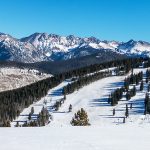Reaching 145.7 million Americans, the outdoor recreation population has grown larger, younger, and become more
dedicated over a six-year study period, according to the 2004 Outdoor Recreation Participation Study for the United States, released this week by the Outdoor Industry Association.
An analysis of outdoor recreation behavior in 21 human-powered
activities
performed by Americans 16 and over, the Study focuses on the growth of
casual “participants” as well as devoted “enthusiasts” since 1998.
Adding 16 million new faces since 1998, outdoor “participants” now
compromise two-thirds of the national population. Within that group,
outdoor “enthusiasts” have surged more than 25 percent to 46.8 million
people, indicating a shift toward more frequent and more dedicated
outdoor
use.
“The long-term picture is very bright. With overall participation
growth,
outdoor recreation has clearly established itself as one of the
strongest,
most stable activity populations over the last six years. And with a
marked
boom in enthusiasts, it's evident that Americans are becoming more
passionate about their outdoor time,” said Frank Hugelmeyer, president
of
Outdoor Industry Association.
Since 1998, the demographic profile of outdoor participants has shifted
younger (median age 35), become slightly more diverse (20% non-white),
and
attracted more people with families (50% of households with a child
under
18), indicating a groundswell of eager new participants and fertile
terrain
for additional growth.
Crossover participation continues to be strong, as outdoor
“participants”
are involved in more than three outdoor activities on average, while
“enthusiasts” embrace at least four.
“Americans appear to have a very personal connection to the outdoors.
They
bond with one or two primary outdoor activities, then explore others in
a
more social, casual way,” said Hugelmeyer. “Once people are competent
in
one outdoor activity, the rest of the world is suddenly a whole lot
closer.”
According to the Study, the bulk of “participants” and “enthusiasts” are
centered on the cornerstone activities of bicycling (87 million / 20.4
million), hiking (71.8 million / 10.5 million) and camping (68.8 million
/
10.8 million). Known as “gateway” activities, these pursuits are the
primary
anchor for attracting new participants, and provide an affordable
non-intimidating entry point to other outdoor activities.
The most significant additions of new “participants” since 1998 came in
trail running (6.4 million new participants, a 20.5% increase); kayaking
(5.7 million new participants, a 235.7% increase); canoeing (4.3
million
new participants, an 18.1% increase); and snowshoeing (3 million new
participants, a 203.4% increase).
Short-term trends in the Study include a variety of expected
fluctuations,
as well as a noteworthy increase in “adventure/sports travel”
participation.
Attracting 55 million participants in 2003 (+14%), the top adventure
vacation activities were hiking/backpacking (9.4 million); swimming (8.4
million); fishing (15.2%) and camping (10.1%).
“The diverse outdoor recreation population is growing a lot like a
strong
mutual fund. The bulk of interest and stability is centered around the
blue
chips — hiking, biking, camping, paddling — while other activities can
be
more affected by short-term trends like weather, celebrities, or media
coverage,” added Hugelmeyer.
The Study was produced for OIA by The Leisure Trends Group. Activities
tracked include backpacking; bicycling (paved road); bicycling (single
track); bicycling (dirt road); bird watching; canoeing; camping (car);
camping (away from car); climbing (artificial wall); climbing (ice);
climbing (natural rock); cross-country/Nordic skiing; fly-fishing;
hiking;
kayaking (recreational); kayaking (touring); kayaking (whitewater);
rafting;
snowshoeing; telemark skiing; trail running.
Designed to identify major trends, the study includes on a Six Year
Perspective (1998-2003), Three Year Perspective (2001-2003), and Short
Term
Trend (2002-2003) observation. Additional features include Youth Market
(16-24) and Female Participation overviews, as well as detailed
summaries of
each outdoor recreation activity.















